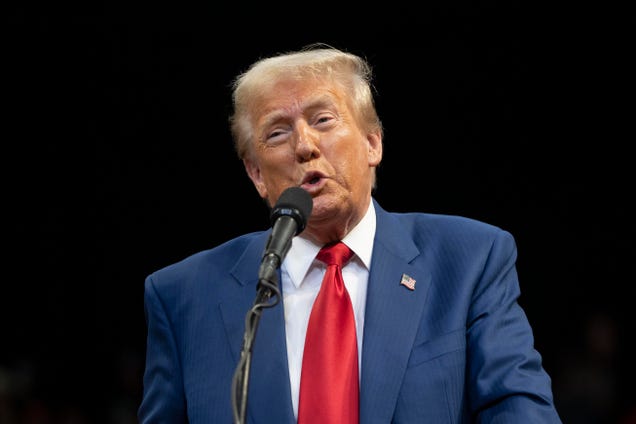Good morning. Bets on the US presidential election have surged after a federal ban on political wagers was lifted, and the punters are favouring Donald Trump by a narrow margin. In other voting news: the Unhedged podcast is nominated for a Signal award! Please vote for us in the Money and Finance category using this link. And email us: robert.armstrong@ft.com and aiden.reiter@ft.com.
China’s stimulus
The Chinese government’s decision to boost the stock market with monetary stimulus resulted in a buying frenzy. Shanghai and Shenzhen’s CSI 300 index jumped 25 per cent and Hong Kong’s Hang Seng index leapt 21 per cent in just two weeks. But things have cooled off since:
When the stimulus was first announced, we argued that for this rally to have legs, the Chinese government would need to incentivise consumer spending and put money directly into the real economy. While the government has signalled that fiscal stimulus is coming, it has been sparing with the details — much to the frustration of investors.
It remains unclear what President Xi Jinping and his government want from the stimulus effort. Some believe that they intend to address the structural problems in the economy. Another possibility is that the government just wants to make sure to hit its 5 per cent GDP growth target this year. Others feel that the effort will be merely cosmetic, aimed at making China’s markets look more appealing. It’s hard to tell which view is correct. While Xi has been known to be sceptical of stimulus in the past, the ministry of finance just laid out a substantive four-part stimulus framework (support real estate investment, address local government debt, boost bank lending into the real economy, and support consumers).
How much stimulus would be enough to get the Chinese economy out of the doldrums?
Start with real estate. The government has announced that it will issue bonds to local governments to allow them to buy back idle land and unsold new homes from developers. One detailed estimate from the French bank Natixis says that would cost about Rmb3tn ($421bn), assuming that the government will buy the properties at 70 per cent market value, which may not be the case.
Next, local government debt. Local governments have a lot of “hidden” risky debt on their balance sheets due to falling real estate values and the shuttering of companies during Covid; estimates range from Rmb50tn-Rmb80tn ($7tn-$11tn). According to reporting from Bloomberg out yesterday, China is considering allocating Rmb6tn ($853bn) through to the end of 2027 to help resolve risky local debt.
The other two priorities — bank lending and consumer support — are even harder to put numbers to. The government has said little of substance. But past stimulus provides clues to what Beijing might be prepared to do across the framework, if there is a real sense of urgency. After the great financial crisis, the Chinese government issued Rmb4tn (about $580bn at the time) of stimulus over a few years. Putting that in today’s GDP terms, that would be about Rmb16tn ($2.2tn). But, given the government’s reticence to put out official numbers, we doubt they will pursue stimulus of quite that scale.
Quantifying the stimulus needed to hit 5 per cent GDP growth is more straightforward. Economists polled by Reuters predict that, at the current trajectory, China’s annual growth rate will be 4.8 per cent at year’s end. Assuming that trajectory is right, the gap between hitting China’s 5 per cent target and the current path is about Rmb252bn of additional output by year’s end, or $35bn. China could try to take the “easy” way out by reaching that directly, either through government purchases or direct investments (as we stated in the past), or by doubling down on its current efforts to boost exports.
But, according to Eswar Prasad at Cornell University, formerly the head of the IMF’s China division, “[while] fiscal stimulus in the range of half to 1 per cent could be powerful and help achieve this year’s growth target, it is not going to fundamentally alter the trajectory of household consumption or private investment, both of which the [Chinese economy] really needs”.
What if the goal is simply to support the animal spirits behind markets? “The markets want this instant gratification, such as [the central government] spending 1-2 per cent of GDP in the next 12 months,” said George Magnus of the China Centre at Oxford university. While Magnus doubts the government actually wants to stimulate the economy in the ways markets expect, it is possible that Beijing can just try to signal to investors that it is serious with a one-time “bazooka” of cash, to the tune of Rmb1tn-Rmb2tn (1-2 per cent of 2023 GDP, or $140bn-$280bn). The government could also satisfy investors by tacking on other gestures, such as issuing more business visas, or scaling back its crackdowns on western businesses.
The ambiguity about what the government hopes to achieve, and what means it will use to achieve it, leaves only one option for serious investors interested in Chinese equities: wait and see. The backbone of any effective intervention in the economy or markets is clear communication. Without it, there cannot be investment, only speculation.
(Reiter and Armstrong)
One good read
Panda breeding isn’t black and white.
FT Unhedged podcast

Can’t get enough of Unhedged? Listen to our new podcast, for a 15-minute dive into the latest markets news and financial headlines, twice a week. Catch up on past editions of the newsletter here.












































































































































You must be logged in to post a comment Login